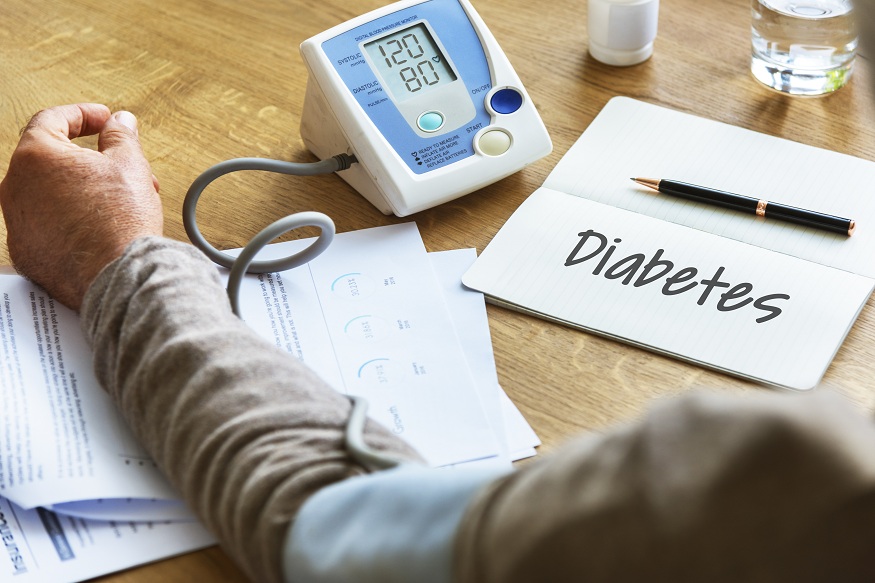Peripheral Artery Disease (PAD) and diabetes are conditions that affect the blood flow and blood vessels. Diabetes raises the sugar content in the blood. This impairs the blood vessels, disrupting the blood circulation. Over time, this will progress into Peripheral Artery Disease (PAD). It is important to find this condition at the early stage and manage it effectively to prevent future complications, particularly for people with diabetes.
Both Peripheral Artery Disease and diabetes impact millions of people globally. Both PAD and diabetes might be discussed separately. It is important to know the interconnection between the two. People with diabetes have the highest chance of developing peripheral artery disease.
Understanding this at an early stage helps prevent major complications significantly. This blog will help you learn about diabetes poor blood circulation, and how diabetes increases the risk of peripheral artery disease.
What Is Peripheral Artery Disease?
Peripheral Artery Disease, also known as PAD, is a well-known circulatory condition that is caused due to the blockage or narrowing of the arteries. This condition primarily occurs in the diabetic legs and sometimes in the hands. This narrowing of arteries prevents the flow of blood to the edges. This causes cramping, leg pain, weakness, and numbness.
If not treated, peripheral artery disease might develop into critical levels, preventing mobility. This increases the chance of different challenges, including limb amputation and non-healing wounds.
What Are The Signs Of Peripheral Artery Disease in Diabetics?
The peripheral artery disease shows differences in people with diabetes and people without diabetes. Peripheral neuropathy is one of the conditions that occurs due to diabetes. This condition leads to tingling or numbness in different organs of the body, particularly in the legs or hands.
If a diabetic has peripheral neuropathy, they might not feel the peripheral artery disease symptoms. Therefore, finding the symptoms in diabetics will be extremely challenging. Now, let’s see the signs of peripheral artery disease in diabetics.
1. Leg Pain While Doing Activities
The common sign of peripheral artery disease is leg pain. People with diabetes might experience pain and cramping in the thighs, calves, and buttocks. These can be relieved with proper rest.
But diabetics will only have subtle signs due to peripheral neuropathy, as this condition might hide the pain indications. They might feel fatigue in their legs and walk slowly. But these signs could also be present due to aging factors.
2. Coldness
Your lower legs or feet might feel colder than the other parts of your body due to peripheral artery disease. For diabetics, neuropathy might also interfere with these symptoms.
3. Foot Ulcers
Open sores or wounds that heal very slowly or not at all can be a clear indicator of poor circulation. In diabetics, these ulcers can easily become infected and lead to severe complications if not treated promptly.
4. Numbness
Reduced or complete loss of sensation in the legs and feet is another warning sign. Due to nerve damage, diabetics may not feel injuries or wounds, allowing them to worsen unnoticed.
The other common symptoms are
- Slow-healing wounds.
- Changes in skin texture.
In case you have all the above symptoms or any one of the symptoms persistently, then getting checked up at the cardiac surgery hospital in Coimbatore will save future complications promptly.
How Are Diabetes And Peripheral Artery Disease Connected?
Diabetes blood flow impairment happens because this condition damages the blood vessels by increasing sugar levels in the bloodstream. Over time, high glucose leads to the buildup of fatty deposits in the arteries, known as atherosclerosis. This narrows the arteries and restricts blood flow to the limbs. The poor circulation caused by this process leads to peripheral artery disease.
In diabetics, this process happens faster and more severely, making them more prone to PAD. The combination of nerve damage and reduced blood flow increases the risk of ulcers, infections, and even amputation in severe cases.
How Can Peripheral Artery Disease And Diabetes Be Managed?
Managing diabetes and peripheral artery disease together requires early detection, consistent monitoring, and lifestyle changes. Maintaining stable blood sugar levels helps prevent further damage to blood vessels. Regular physical activity and a balanced diet improve circulation and reduce complications.
Foot care plays an essential role, as diabetics are more likely to develop slow-healing wounds. Checking the feet daily for cuts or sores and consulting a healthcare professional immediately can prevent serious infections. Regular medical follow-ups ensure both conditions are kept under control and help avoid future complications.
Conclusion
Peripheral Artery Disease and diabetes are closely connected through their effect on blood vessels and circulation. When not managed early, both can lead to severe complications such as limb damage or amputation. Early detection, consistent management, and lifestyle adjustments can make a major difference in preventing these outcomes.
If you experience leg pain, numbness, or non-healing wounds, visit a cardiac thoracic specialist in Coimbatore for timely diagnosis and treatment.



















+ There are no comments
Add yours